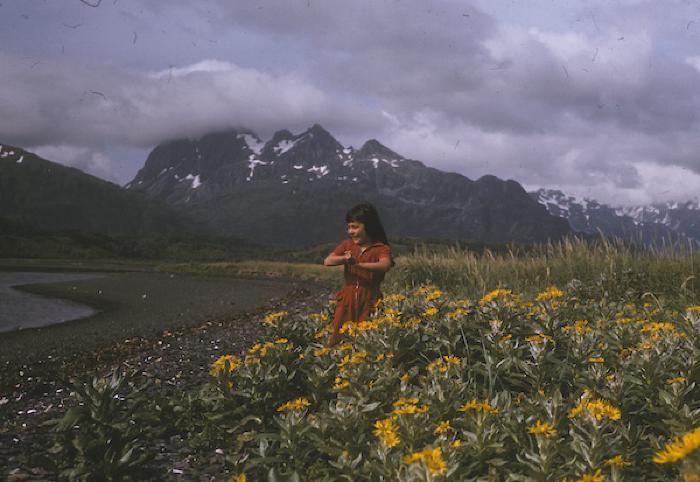Beach Fleabane — Uuqutiit Suitkaa’it

Beach fleabane, also known as seaside ragwort (Senecio pseudoarnica Less.), is a member of the sunflower family. This stout, perennial herb likes sandy soil and grows widely in northern environments, including Alaska, Canada, and Russia. In the Kodiak region, it is commonly found on the upper shoreline, where it thrives in sandy soils. In optimal conditions, it can grow up to three feet tall. Beach fleabane has large, fleshy, green leaves with a white, wooly underside. It blooms in mid to late summer forming large, yellow, daisy-like flowers.
The Alutiiq word for this plant, uuqutiit suitkaa’it, literally means “bumble bees’ flowers”. This may be a warning to watch for bees when harvesting beach fleabane. Culturally, bees are considered very dangerous. They drink the nectar of the monkshood plant—the source of deadly whaling poison.
Alutiiq people use beach fleabane roots to treat boils. They wash the roots and then pound them until they are finely mashed. The resulting pulp is placed in a moistened cloth and used to bandage an afflicted area. Left overnight, the roots draw the pus from the boil and remove the infection. Other people crush and heat beach fleabanes stems to make switches for use in the banya. People switch with this plant to relieve the pain of arthritis and heal broken bones.
